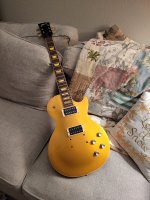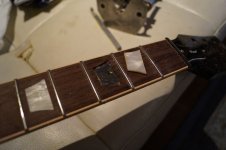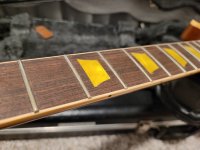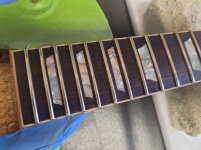Bruce R
Well-known member
- Joined
- Mar 2, 2007
- Messages
- 1,129
I just picked up an '04 Classic 1960 Goldtop that was being worked on. I am interested in any info I can get from anyone who has replaced the fret inlays. Mine are what as commonly known as the 'snot-colored' ones, so this really bothers me. Unfortunately, this guitar had just been refrettted, so I know this makes it tougher.
Any tips, advice, or opinions are welcome
Any tips, advice, or opinions are welcome








